-
 Bitcoin
Bitcoin $80,453.1452
-5.43% -
 Ethereum
Ethereum $2,134.0238
-7.55% -
 Tether USDt
Tether USDt $0.9991
0.02% -
 XRP
XRP $2.0397
-6.66% -
 BNB
BNB $575.7087
-5.99% -
 Solana
Solana $128.3850
-6.85% -
 USDC
USDC $1.0000
0.00% -
 Dogecoin
Dogecoin $0.1891
-7.87% -
 Cardano
Cardano $0.5996
-8.53% -
 TRON
TRON $0.2195
-3.39% -
 Litecoin
Litecoin $121.3959
-0.97% -
 Chainlink
Chainlink $13.8947
-8.62% -
 Avalanche
Avalanche $20.6321
-7.57% -
 UNUS SED LEO
UNUS SED LEO $9.2312
1.87% -
 Stellar
Stellar $0.2645
-7.79% -
 Sui
Sui $2.5709
-11.67% -
 Toncoin
Toncoin $3.1723
-8.41% -
 Hedera
Hedera $0.1880
-4.86% -
 Shiba Inu
Shiba Inu $0.0...01333
-7.30% -
 Polkadot
Polkadot $4.5889
-5.01% -
 MANTRA
MANTRA $7.2832
0.43% -
 Hyperliquid
Hyperliquid $19.1430
-5.08% -
 Ethena USDe
Ethena USDe $0.9990
0.00% -
 Bitcoin Cash
Bitcoin Cash $277.0118
-6.08% -
 Dai
Dai $0.9999
-0.01% -
 Bitget Token
Bitget Token $3.8766
-0.53% -
 Uniswap
Uniswap $7.3205
-8.43% -
 Monero
Monero $213.7242
-0.32% -
 Aptos
Aptos $5.7980
-5.25% -
 NEAR Protocol
NEAR Protocol $2.8409
-6.76%
How to judge market trends in Ethereum spot trading?
Judging Ethereum's spot market trends demands a holistic approach: analyzing on-chain metrics, technical indicators, market sentiment, order books, and macroeconomic factors for a comprehensive view of price movements.
Feb 28, 2025 at 07:18 am
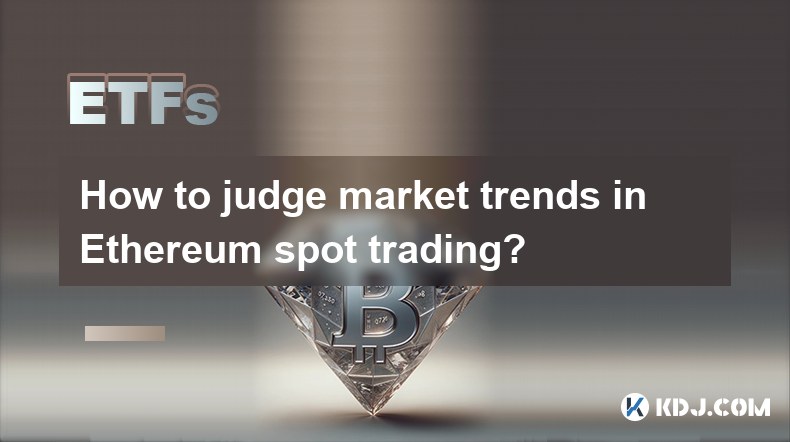
How to Judge Market Trends in Ethereum Spot Trading?
Key Points:
- Understanding Ethereum's Fundamentals: Analyzing on-chain metrics, developer activity, and network upgrades to gauge long-term potential and identify potential catalysts for price movements.
- Technical Analysis: Utilizing various charting tools and indicators (moving averages, RSI, MACD, etc.) to identify short-term price patterns and potential support/resistance levels.
- Sentiment Analysis: Monitoring social media, news outlets, and analyst opinions to gauge overall market sentiment towards Ethereum and identify potential shifts in investor confidence.
- Order Book Analysis: Examining the depth and distribution of buy and sell orders to understand immediate market liquidity and potential price pressure.
- Macroeconomic Factors: Considering the influence of broader economic conditions (inflation, interest rates, geopolitical events) on the cryptocurrency market and Ethereum's price.
How to Judge Market Trends in Ethereum Spot Trading?
Spot trading involves buying and selling Ethereum at the current market price. Judging market trends effectively requires a multi-faceted approach, combining fundamental, technical, and sentiment analysis, as well as understanding the impact of macroeconomic factors. Let's delve deeper into each aspect:
- Understanding Ethereum's Fundamentals:
Ethereum's fundamental strength is a crucial factor influencing its price. This goes beyond simply looking at the current price. A thorough fundamental analysis requires delving into several key metrics and developments. For instance, understanding the network's activity through on-chain data is paramount. This includes analyzing metrics such as daily active addresses, transaction volume, gas fees, and the total value locked (TVL) in decentralized finance (DeFi) protocols built on Ethereum. A surge in active addresses, high transaction volume, and increasing TVL generally suggest strong network activity and potential for future price appreciation. Conversely, a decline in these metrics could indicate weakening demand and potential downward pressure on the price.
Further, examining the level of developer activity is crucial. The number of active developers contributing to the Ethereum ecosystem is a strong indicator of long-term sustainability and innovation. A thriving developer community suggests continued improvements, upgrades, and the potential for new applications and use cases, all of which can positively impact Ethereum's price. This can be tracked through GitHub repositories, community forums, and developer-focused news sources. Major network upgrades, such as the transition to proof-of-stake (PoS) with the Merge, also significantly impact the fundamental value proposition of Ethereum. Analyzing the success and implications of such upgrades, including their impact on energy consumption, transaction speed, and security, is essential for judging the long-term prospects of the cryptocurrency. Finally, understanding the regulatory landscape and potential governmental actions regarding Ethereum is vital. Changes in regulations can significantly affect the price and accessibility of the cryptocurrency, impacting market sentiment and investor confidence. Staying abreast of regulatory developments is crucial for informed decision-making. A thorough understanding of these factors provides a long-term perspective on Ethereum's potential and helps identify potential catalysts for future price movements.
- Technical Analysis:
Technical analysis utilizes price charts and various indicators to predict future price movements. It focuses on historical price patterns and volume to identify trends and potential support and resistance levels. Various charting tools and indicators are used, including moving averages (simple moving average (SMA), exponential moving average (EMA)), relative strength index (RSI), moving average convergence divergence (MACD), Bollinger Bands, and others. These tools help identify potential buy and sell signals, trend reversals, and overbought/oversold conditions. For example, a bullish crossover of a short-term moving average above a long-term moving average can signal a potential upward trend. Similarly, an RSI reading above 70 often suggests an overbought condition, potentially indicating a price correction. However, it is crucial to remember that technical analysis is not foolproof and should be used in conjunction with other forms of analysis.
Different timeframes (e.g., daily, weekly, monthly) can provide insights into different aspects of the market. Short-term charts can help identify short-term trading opportunities, while long-term charts provide a broader perspective on the overall trend. Analyzing candlestick patterns, such as hammer, engulfing, or doji patterns, can also offer valuable insights into potential price reversals or continuations. Support and resistance levels, identified through previous price highs and lows, can provide insights into potential price ceilings and floors. Identifying breakouts from these levels can provide strong trading signals. However, the accuracy of technical analysis depends on the trader's skill and experience in interpreting charts and indicators. Therefore, continuous learning and practice are essential for effective technical analysis. The combination of various indicators and the consideration of multiple timeframes can provide a more comprehensive and reliable assessment of market trends.
- Sentiment Analysis:
Gauging market sentiment is crucial for understanding investor psychology and predicting potential price movements. This involves monitoring various sources of information to assess the overall feeling towards Ethereum. Social media platforms like Twitter, Reddit, and Telegram are valuable sources of information, providing real-time insights into public opinion and investor sentiment. Monitoring the frequency and nature of discussions around Ethereum, including news articles, blog posts, and analyst reports, can help identify shifts in sentiment. An increase in positive news and discussions generally suggests bullish sentiment, while negative news and concerns can indicate bearish sentiment. However, it is essential to be critical of information found on social media and to filter out noise and misinformation.
Analyst reports and ratings from reputable sources can provide valuable insights into the overall market outlook for Ethereum. These reports often consider both fundamental and technical factors and offer well-researched perspectives on potential price movements. News outlets covering the cryptocurrency market can provide important information about regulatory changes, technological advancements, and other events that might affect Ethereum's price. Tracking the volume of positive and negative news can be an effective way to gauge overall market sentiment. However, it is crucial to be aware of potential biases and conflicts of interest in the information sources. Analyzing sentiment from various sources and comparing different perspectives can provide a more comprehensive understanding of market sentiment and its potential impact on Ethereum's price.
- Order Book Analysis:
The order book provides a real-time snapshot of the available buy and sell orders for Ethereum. Analyzing the order book can provide insights into immediate market liquidity and potential price pressure. The order book shows the depth and distribution of buy and sell orders at different price levels. A large number of buy orders at a specific price level indicates strong support, while a large number of sell orders suggests potential resistance. The bid-ask spread, the difference between the highest buy order and the lowest sell order, indicates the liquidity of the market. A narrow spread suggests high liquidity, meaning that large orders can be executed without significantly affecting the price. A wide spread indicates low liquidity, meaning that large orders could cause significant price fluctuations.
Analyzing the order book can help identify potential price breakouts. A significant increase in buy orders above a resistance level could indicate a potential breakout to the upside, while a significant increase in sell orders below a support level could suggest a potential breakdown. However, order book analysis requires practice and experience to interpret effectively. The order book can be a dynamic and complex structure, and its interpretation can be subjective. It is crucial to use the order book in conjunction with other forms of analysis, such as technical analysis and sentiment analysis, to obtain a comprehensive understanding of market trends. Sophisticated traders often use order book analysis to identify optimal entry and exit points, minimize slippage, and manage risk effectively.
- Macroeconomic Factors:
Macroeconomic factors, such as inflation, interest rates, and geopolitical events, can significantly influence the cryptocurrency market, including Ethereum's price. High inflation and rising interest rates often lead to a flight to safety, where investors move their assets into more stable investments, potentially causing a decline in the price of riskier assets like cryptocurrencies. Conversely, periods of low inflation and low interest rates can create a more favorable environment for risk-taking, potentially leading to increased investment in cryptocurrencies.
Geopolitical events, such as wars, political instability, or regulatory changes, can also impact the cryptocurrency market. These events can create uncertainty and volatility, affecting investor confidence and leading to price fluctuations. Therefore, staying informed about macroeconomic developments is crucial for understanding the broader context in which Ethereum's price is moving. Monitoring economic indicators, such as inflation rates, interest rate decisions, and GDP growth, can help assess the overall economic climate and its potential impact on Ethereum's price. Following news about geopolitical events and regulatory changes can help anticipate potential market reactions and adjust trading strategies accordingly. Considering these macroeconomic factors alongside fundamental and technical analysis provides a more holistic perspective on market trends and helps make more informed trading decisions.
FAQs:
Q: What are the best indicators for predicting Ethereum price movements?
A: There's no single "best" indicator. Effective Ethereum price prediction requires a combination of indicators, including moving averages (SMA, EMA) for trend identification, RSI and MACD for momentum and potential reversals, and Bollinger Bands for volatility analysis. Order book analysis provides insights into immediate market liquidity and pressure. However, remember that indicators are tools; they don't guarantee accurate predictions.
Q: How can I mitigate risk in Ethereum spot trading?
A: Risk mitigation strategies include diversifying your portfolio (don't put all your eggs in one basket), employing proper position sizing (never risk more than you can afford to lose), utilizing stop-loss orders to limit potential losses, and consistently employing risk management techniques. Thorough research and understanding of market dynamics are crucial.
Q: What are the limitations of technical analysis in Ethereum spot trading?
A: Technical analysis relies on historical data, which doesn't guarantee future performance. Market sentiment and unexpected events can significantly influence prices, rendering technical indicators less effective. Over-reliance on any single indicator can lead to inaccurate predictions. Combining technical analysis with fundamental analysis and other factors provides a more balanced approach.
Q: How frequently should I monitor Ethereum's market trends?
A: The frequency depends on your trading style and risk tolerance. Day traders need constant monitoring, while long-term investors may only check periodically. Regular updates on news, fundamental shifts, and technical indicators are essential, regardless of your timeframe.
Q: Are there any resources for learning more about Ethereum spot trading?
A: Many online resources exist, including educational websites, trading platforms with learning materials, and reputable cryptocurrency news sources. Always be critical of information found online and verify its source. Consider seeking guidance from experienced traders or financial advisors before engaging in spot trading.
Q: How do macroeconomic factors impact Ethereum's price in the long term?
A: Long-term impacts are complex. Sustained high inflation or interest rates could negatively affect investor sentiment and potentially decrease demand for riskier assets like Ethereum. Conversely, periods of economic stability or technological advancements could boost confidence and drive up demand. Geopolitical events can cause short-term volatility but may not necessarily dictate long-term trends. The long-term price will be influenced by a complex interplay of these and other factors.
Disclaimer:info@kdj.com
The information provided is not trading advice. kdj.com does not assume any responsibility for any investments made based on the information provided in this article. Cryptocurrencies are highly volatile and it is highly recommended that you invest with caution after thorough research!
If you believe that the content used on this website infringes your copyright, please contact us immediately (info@kdj.com) and we will delete it promptly.
- Investors Weighing XRP, Raydium (RAY), and BlockDAG (BDAG)
- 2025-02-28 12:25:33
- Blockdag (Bdag) surpasses XRP and Raydium as the best choice for profit in 2025
- 2025-02-28 12:25:33
- Coinbase Lawsuit Dropped by SEC, Reflecting New Crypto Stance Under Trump
- 2025-02-28 12:25:33
- Dogecoin (DOGE) Network Activity Plunges 95% as Price Slumps. Should Holders Worry?
- 2025-02-28 12:25:33
- Justin Sun purchased $30 million in crypto tokens from World Liberty Financial (WLF), a new venture backed by President Donald Trump and his family.
- 2025-02-28 12:25:33
- Best Crypto Sports Betting Sites - Find the Top Bitcoin Betting Site Offering the Best Welcome Bonus
- 2025-02-28 12:25:33
Related knowledge
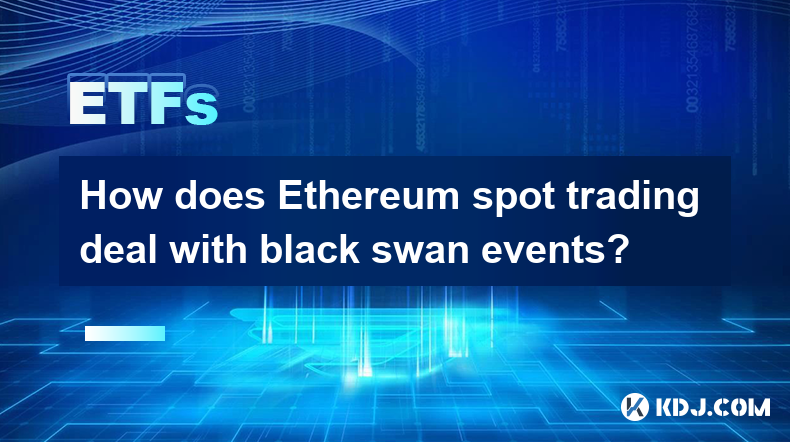
How does Ethereum spot trading deal with black swan events?
Feb 28,2025 at 07:54am
How Does Ethereum Spot Trading Deal with Black Swan Events?Key Points:Ethereum's decentralized nature offers some resilience against black swan events, but it's not immune.Liquidity plays a crucial role in weathering market shocks; its impact on price discovery and order execution is examined.Smart contract vulnerabilities and exploits can trigger unfor...
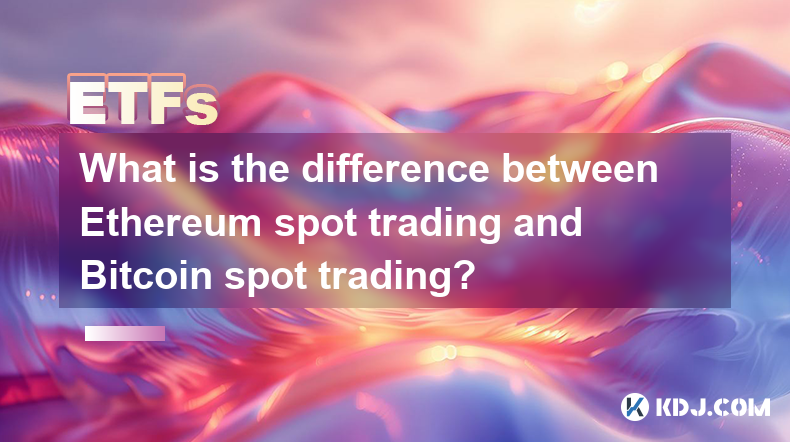
What is the difference between Ethereum spot trading and Bitcoin spot trading?
Feb 28,2025 at 02:43am
What is the difference between Ethereum spot trading and Bitcoin spot trading?Key Points:Underlying Asset: The core difference lies in the underlying asset being traded: Bitcoin (BTC) versus Ethereum (ETH). This difference impacts everything from market capitalization and volatility to the use cases driving demand.Market Maturity and Liquidity: Bitcoin,...
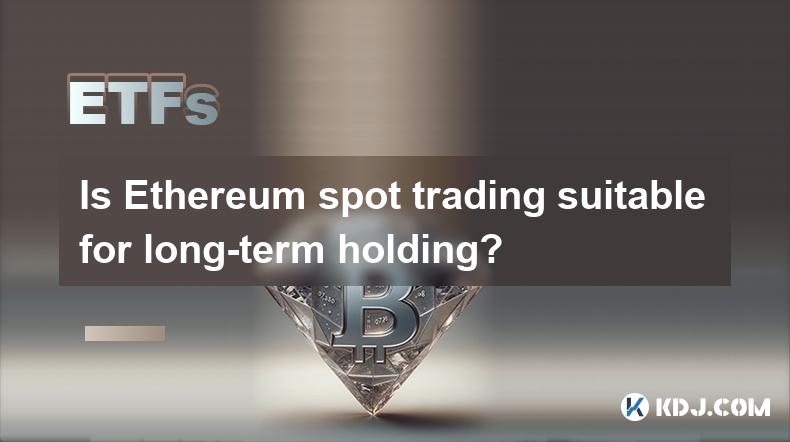
Is Ethereum spot trading suitable for long-term holding?
Feb 28,2025 at 12:12am
Is Ethereum Spot Trading Suitable for Long-Term Holding?Key Points:Understanding Spot Trading vs. Other Methods: Spot trading involves the immediate exchange of Ethereum (ETH) for fiat currency or another cryptocurrency at the current market price. This contrasts with futures or derivatives trading, which involve contracts for future delivery. Long-term...
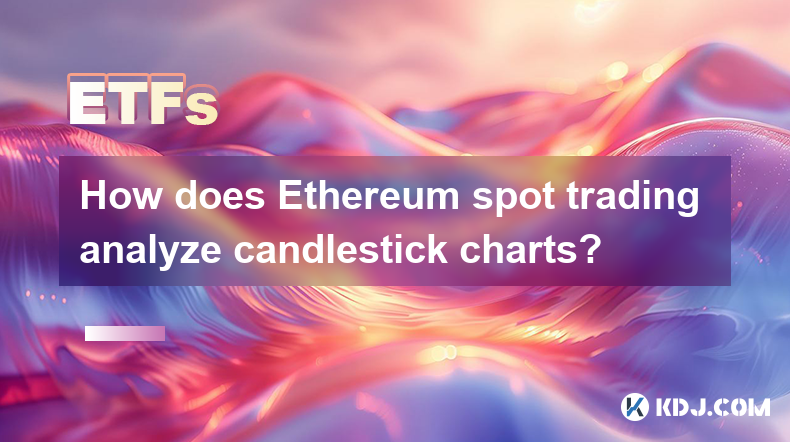
How does Ethereum spot trading analyze candlestick charts?
Feb 28,2025 at 06:37am
How Does Ethereum Spot Trading Analyze Candlestick Charts?Key Points:Understanding Ethereum's price action through candlestick charts requires a grasp of fundamental chart patterns and technical indicators.Identifying trends (uptrends, downtrends, sideways trends) is crucial for effective trading strategies.Volume analysis in conjunction with candlestic...
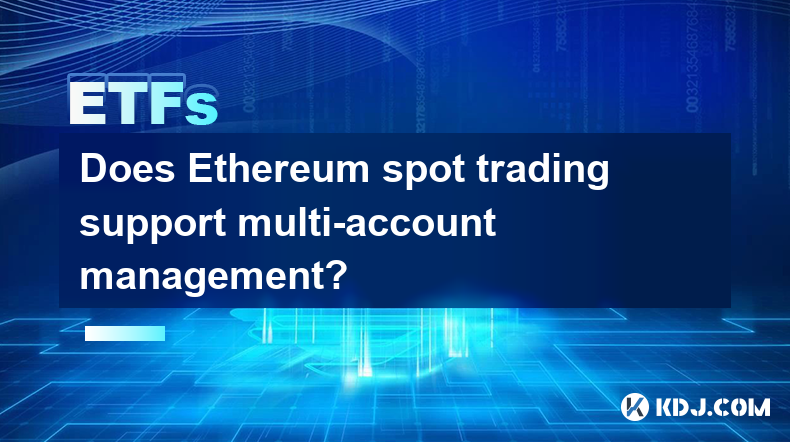
Does Ethereum spot trading support multi-account management?
Feb 27,2025 at 08:55pm
Does Ethereum Spot Trading Support Multi-Account Management?Key Points:Ethereum spot trading, unlike some centralized exchanges, doesn't inherently support multi-account management directly within the Ethereum network itself. The concept of "accounts" on Ethereum is fundamentally different from the account systems used by centralized exchanges.Multi-acc...
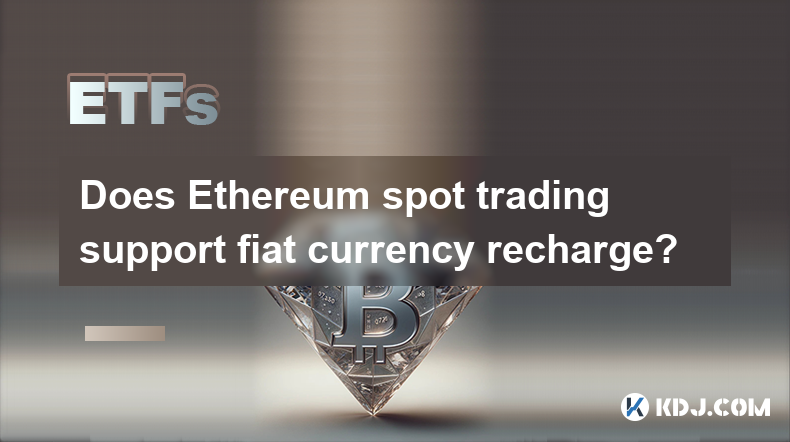
Does Ethereum spot trading support fiat currency recharge?
Feb 28,2025 at 02:24am
Does Ethereum Spot Trading Support Fiat Currency Recharge? A Deep Dive into Fiat On-Ramps for ETH TradingKey Points:Understanding Fiat On-Ramps: The process of converting fiat currency (like USD, EUR, GBP, etc.) into cryptocurrency, specifically Ethereum (ETH), for spot trading. We will explore various methods and platforms facilitating this.Centralized...

How does Ethereum spot trading deal with black swan events?
Feb 28,2025 at 07:54am
How Does Ethereum Spot Trading Deal with Black Swan Events?Key Points:Ethereum's decentralized nature offers some resilience against black swan events, but it's not immune.Liquidity plays a crucial role in weathering market shocks; its impact on price discovery and order execution is examined.Smart contract vulnerabilities and exploits can trigger unfor...

What is the difference between Ethereum spot trading and Bitcoin spot trading?
Feb 28,2025 at 02:43am
What is the difference between Ethereum spot trading and Bitcoin spot trading?Key Points:Underlying Asset: The core difference lies in the underlying asset being traded: Bitcoin (BTC) versus Ethereum (ETH). This difference impacts everything from market capitalization and volatility to the use cases driving demand.Market Maturity and Liquidity: Bitcoin,...

Is Ethereum spot trading suitable for long-term holding?
Feb 28,2025 at 12:12am
Is Ethereum Spot Trading Suitable for Long-Term Holding?Key Points:Understanding Spot Trading vs. Other Methods: Spot trading involves the immediate exchange of Ethereum (ETH) for fiat currency or another cryptocurrency at the current market price. This contrasts with futures or derivatives trading, which involve contracts for future delivery. Long-term...

How does Ethereum spot trading analyze candlestick charts?
Feb 28,2025 at 06:37am
How Does Ethereum Spot Trading Analyze Candlestick Charts?Key Points:Understanding Ethereum's price action through candlestick charts requires a grasp of fundamental chart patterns and technical indicators.Identifying trends (uptrends, downtrends, sideways trends) is crucial for effective trading strategies.Volume analysis in conjunction with candlestic...

Does Ethereum spot trading support multi-account management?
Feb 27,2025 at 08:55pm
Does Ethereum Spot Trading Support Multi-Account Management?Key Points:Ethereum spot trading, unlike some centralized exchanges, doesn't inherently support multi-account management directly within the Ethereum network itself. The concept of "accounts" on Ethereum is fundamentally different from the account systems used by centralized exchanges.Multi-acc...

Does Ethereum spot trading support fiat currency recharge?
Feb 28,2025 at 02:24am
Does Ethereum Spot Trading Support Fiat Currency Recharge? A Deep Dive into Fiat On-Ramps for ETH TradingKey Points:Understanding Fiat On-Ramps: The process of converting fiat currency (like USD, EUR, GBP, etc.) into cryptocurrency, specifically Ethereum (ETH), for spot trading. We will explore various methods and platforms facilitating this.Centralized...
See all articles

















































































